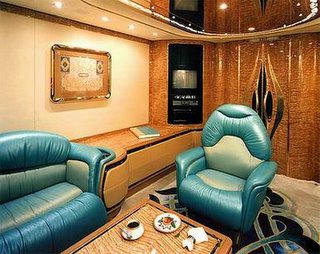|* cinema. Moustapha Akkad.
I might be a little bit late on picking up the news, I forgot to post about the significant loss.

There were at least 57 people who died in the
bombings in Jordan and probably their names will not tell you anything. But it is enormously sad that a bright Arab American director (originally coming from Syria)
Moustapha Akkad was among them. He is the author of such epic films as
The Message and
Lion of the Desert. (Well, he is more known to the wide public as a producer of the horror series about Halloween and Michael Myers).
However, his much more important contribution is done in the field of potraying Islam in cinema. As Dr. Marcy Newman was writing in her blog "
Body on the Line": "These films were a part of his effort to create Hollywood epics that would not demonize Arabs or Muslims. It saddens me that someone like Akkad, whose vision and spirit we need in Hollywood so desperately died. He was a rare one indeed".
Akkad was currently involved in the new project shooting a movie about the legendary Kurdish hero Salahuddin born in Iraq, who would reclaim Jerusalem from the Crusaders in the 12th century. He even got the iconic Sean Connery on board to star in the movie.
Akkad was coming from a small town of Aleppo in Syria and always thought of his homeland as being sacred.
He shared fond memories of Syria, its people, the way he was brought up as a Muslim and as an Arab, the parables told to him by his father.
He was very passionate in describing his love for his religion and Arab causes and his disdain for terrorism.
Ironically, it would be terrorism that would end his life.
|* documentary. Fallujah - The Hidden Massacre.

Recently there was shown the Italian documentary
"Fallujah - The Hidden Massacre" on Rai TV. Now everyone is talking about the use of the unconventional weapons in Fallujah.
Khalid Jarrar wrote in his
blog Secret in Baghdad that he knew about the use of chemical weapons in Falluja, because simply everyone in Iraq knows, and everyone that was in Falluja knows it.
He continues: "One of my friends, a very brave Iraqi girl that was working on her own to evacuate civilians from inside Falluja during the fight ( yes, of course there were civilians inside the city ) told me that an American soldier asked her specifically not to eat or drink anything inside the city, you know what that means?
yah, I guess you do".
Khalid also points out that the scandal about
the abuse of prisoners in an Interior Ministry bunker in Baghdad came across right after the explosive and revealing Italian documentary. Coincidence? He also doubts the official story for the U.S. troops to go and search for a teenager.
"this is SO wag the dog (they were going to help the cute girl with the white cat in the movie ["
Wag the dog"]) so the American army sent a number of soldiers to look for a 15 years old boy because his parents were searching for him? OOHH YAAAA RIIIGGHTTT... and accidentally while carrying out that noble sweet hearted operation, carrying roses and flowers to give to the poor little boy, they stumbled up on 173 detainees, of course! Is there any crazy one among you that question that story?"
At the same time
Raed Jarrar in his blog
"Raed in the Middle: Caught between the East and the West" wrote:
"There was a very wide use of depleted uranium (DU) against Iraqi armored tanks and buildings, and many of these tanks and buildings were in the middle of residential areas. My friends from GNN included some informative parts about DU in their excellent documentary: "BattleGround: 21 Days on the Empire's Edge". We went together to some places hit with DU bullets, and tested the area with a Geiger counter.
In addition to that, I took many pictures (and even some samples) of some walls in the middle of Nasiriya (the southern Iraqi city). The walls were full of nails! Hundreds, or maybe thousands, of nails because of a US nail bomb that targeted one of the city's oldest cinemas".
I do remember in the beginning of the war myself reports on Russian channels about 'unconventional' weapons being used against civilians in Iraq. I wonder how come people tend to forget such crutial facts the second they dessappear from the media agenda? And why all the attention will be turned away again if another scandal pops up?
|* photos. Jean-Marc Bouju - winner of World Press Photo in 2003

A photo made by Jean-Marc Bouju during the war in Iraq in 2003 won the price of the World Press Photos Competition and became rather famous. It is a photo of an Iraqi war prisoner at a U.S. detention camp with a hood on his head and holding his fraigttened son.
For me this photo symbolizes the sufferings of people in any war. It doesn't matter who that person is or who put the hood on his head. The image of the barbed wire is very strong. At the same time it is a story of love of a father towards his son even druing the hard times.













 There were at least 57 people who died in the
There were at least 57 people who died in the 

